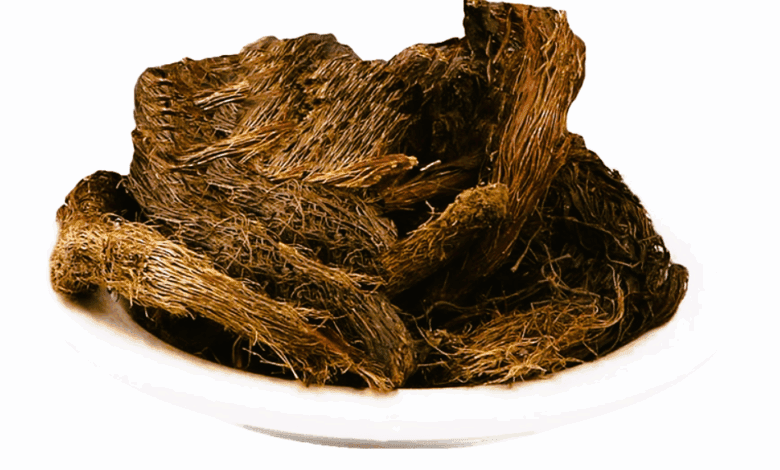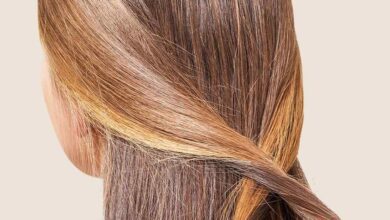Jatamansi for Hair Growth

The perennial Himalayan herb jatamansi thrives at elevations between 3000 and 4000 meters. While jatamansi oil encourages hair growth, jatamansi roots are used to lessen hair loss.
Jatamansi: What is it?
An important and ancient part of Indian history is Ayurveda. The Alpine Himalayas are home to the perennial Ayurvedic herb jatamansi. It is a member of the kingdom Plantae’s Valerian family. At elevations between 3000 and 4000 meters, the plant thrives. The plant known as jatamansi is also called “Indian Spikenard” in English and “tapaswini” in Ayurveda.
The roots and rhizomes of the plant are edible. Special oils like nardal, jatamansic acid, and nardin are produced by the plant’s rhizomes.
The jatamansi plant is listed as a critically endangered medicinal plant species by the IUCN.
The advantages of jatamansi
The Jatamansi plant is small, bell-shaped, and pink. The plant yields amber-colored oil that is utilized in religious rituals and perfume. The jatamansi plant offers numerous advantages due to its special qualities—
- It is possible to purchase jatamansi essential oil, which can be combined with an oil or homemade hair tonic to promote hair growth.
- The rhizomes of jatamansi are used to treat hysteria, epilepsy, and seizures.
- The plants’ methanolic extracts have antibacterial and antifungal qualities.
- Jatamansi root improves heart health and relieves insomnia.
- The plant can aid in the treatment of diabetes and hyperglycemia.
- When taken as tablets or capsules, jatamansi powder enhances memory and brain function.
- To shield the skin from dust and pollutants, dried jatamansi roots are used as a powerful skin cleanser.
Hair Issues and the Use of Jatamansi Properties to Treat Them
Nowadays, it is challenging to keep thick, healthy hair. Dandruff, frizzy hair, hair loss, vitamin deficiencies, hormonal imbalances, greying, and other hair and scalp problems are common among women. It’s challenging to balance a hectic schedule with making sure your hair always looks flawless.
Consider nature’s gift of quickly nurturing your hair in place of time-consuming hair routines and regimens. Achieving the ideal length, cut, and style are crucial components of your overall appearance. You agree, we’re sure.
Another idea that you support? that maintaining a healthy hair regimen is crucial. Herbal hair care products can be used to treat hair damage. It’s sustainable, too! As mentioned earlier, jatamansi’s many qualities that promote hair growth and volume make it a popular choice for hair treatments.
- To promote hair growth, jatamansi roots are ground into a paste and applied to the scalp.
- Hair oil extracted from jatamansi decreases bald spots, promotes hair growth, and lessens hair loss.
- Jatamansi hair oils can be used as a natural dye and also give hair a black hue.
- Coconut oil is combined with jatamansi powder to moisturize hair without making it oily.
Use and Consumption of Jatamansi
The plant jatamansi is edible and has health benefits for people. Additionally, it is applied externally to address hair issues.
Advantages of Eating Jatamansi
- The small shrub jatamansi, whose rhizomes may promote hair growth, is treated with its bitter tonic. It has been demonstrated to promote hair growth in cases of male pattern baldness and after chemotherapy for cancer.
- Because of its antifungal and antioxidant qualities, jatamansi oil can be used to treat scalp infections and stop graying.
- When used alone or in conjunction with other herbs, jatamansi oil, which is an oil extracted from jatamansi, contains antioxidants and encourages hair growth.
- Jatamansi lengthens the hair’s growth phase and increases follicular size, which encourages hair growth.
The use of Jatamansi
- Shine and hair growth are encouraged by applying a blend of coconut or sesame oil and jatamansi oil to the scalp.
- In addition to strengthening hair, castor oil, when combined with jatamansi oil, deeply nourishes and encourages the growth of hair on bald areas.
Forms of Jatamansi That Are Available
Women can purchase jatamansi in a variety of forms, such as bottled oils, powdered jatamansi (jatamansi churna), or even the boiled and edible jatamansi root.
Extracts from the roots of the plant are used in the ayurvedic jatamansi tablets.
The dosages to be taken
Adults can take one to three grams of powdered jatamansi twice a day.
Depending on taste, jatamansi oil and root powder can be taken with honey, ghee, or water at concentrations of 2–5 drops and 1-3 g, respectively.
How Can Jatamansi Be Used for Hair?
Mix 200ml of neem oil with 25g of jatamansi powder to treat skin infections and dandruff. To give the powder time to absorb the oil, expose the mixture to the sun for 24 to 36 hours.
The prepared oil is massaged into the scalp and applied for ten to fifteen hours to get the best effects. It is better to wash with a mild natural shampoo.
In conclusion
Synthetic hair treatments yield good results, but they don’t last long. To combat and treat hair damage brought on by chemical treatments, dermatologists advise using gentle hair care products. Natural ingredients have long-term advantages and are safer.
The benefits of jatamansi for hair care have been validated by numerous clinical studies. Hair loss can be decreased, split ends can be treated, and hair can be strengthened with jatamansi. For any woman who desires strong, healthy hair that requires little care, this is a great decoction.




